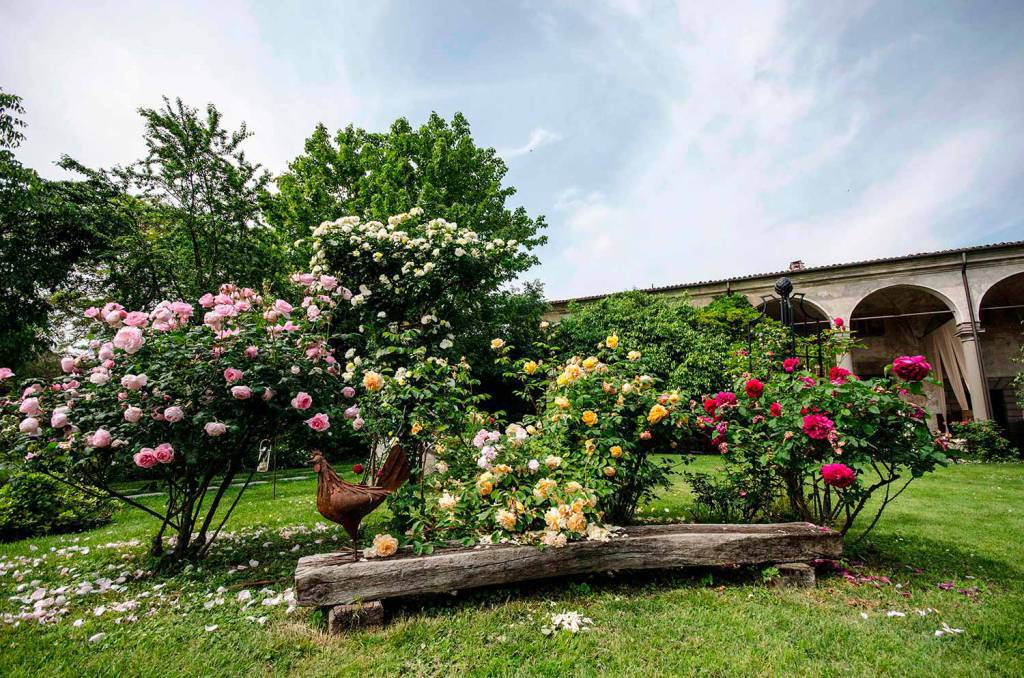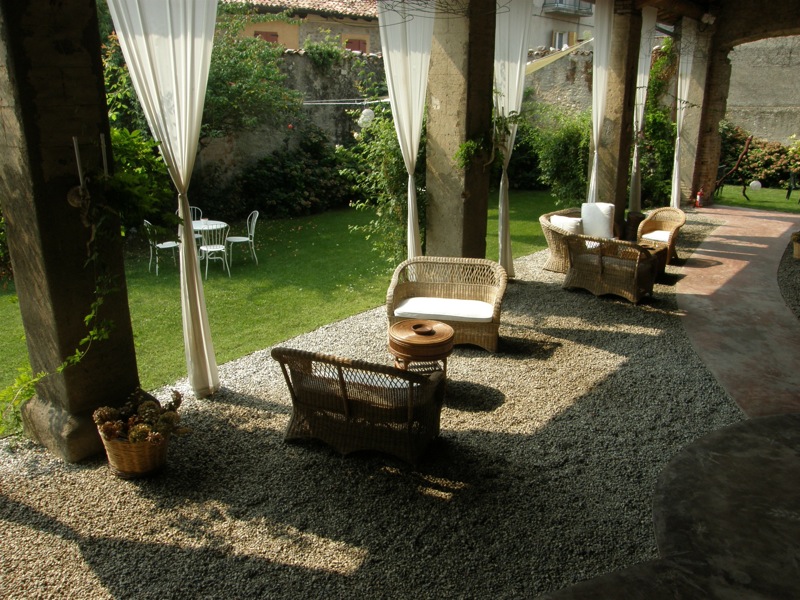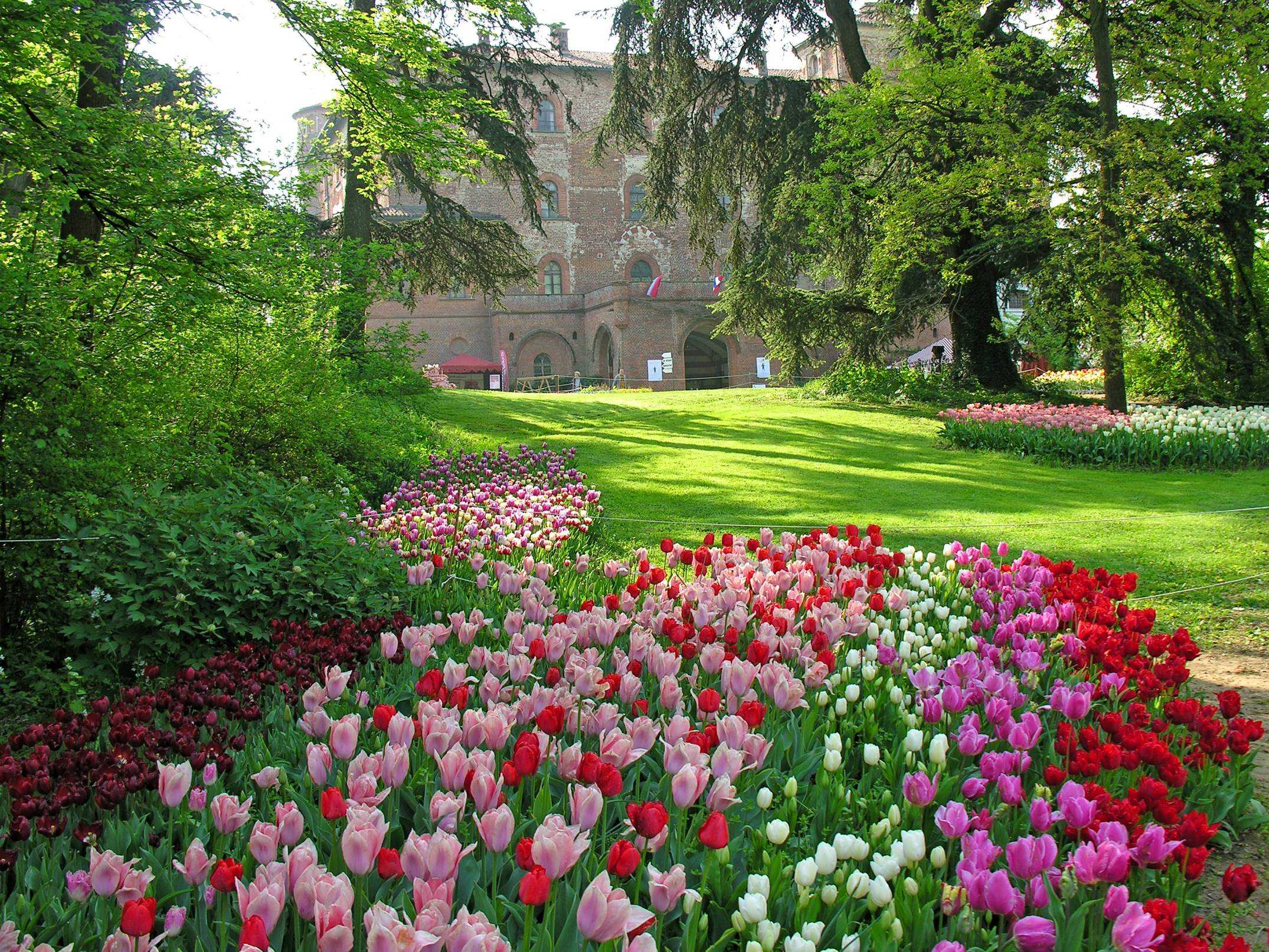
Quistini Castle
This post is also available in:
 Italiano (Italian)
Italiano (Italian)
Quistini Castle, also known as Palazzo Porcellaga, is located in an area that used to be the theater of Venetian and French domination: for this reason, during the second half of the 1500s, the nobles built fortified palaces in the countryside, with defensive walls for protection from the battles usually raging nearby. So it happened with Castello Quistini as well, surrounded by an irregular pentagon-shaped thin wall system, five towers at the corners, and a four-story tower inside.
Inside the building, there is a garden, created in more recent times, and differently themed. There’s the Labyrinth of Roses, for instance: it consists of three large concentric circles made exclusively of roses (Rosa spp.). In the center, there’s a gazebo covered by climbing roses (Rosa banksiae alba and Rosa banksiae alba plena).
The circles are, in turn, divided into four sectors, each one telling the very story of the roses. At the entrance, the first plants belong to Rosa rugosa species, others are modern ground covering species.
On both sides, there are varieties of modern and old roses. In the southern part, there are English roses of David Austin, while an arch is covered with a variety of old “M.me Alfred Carriere” specimens.
Another themed area is the Bioenergetic Garden, created in 2004 by eco-designer Marco Nieri and architect Chiara Odolini. It is based on specific research and techniques: that is to say, the idea that plants and nature are beneficial to the people. In fact, many plant species have got therapeutic properties, and they’re used for medicines or food. It’s also true that plants can offer psychological, sensory, and emotional benefits.
The Hydrangea Garden is another very evocative corner of this garden: among several species and varieties, there are Hydrangea involucrata, “Blue Bird”, “Tricolor”, “Annabelle” Hydrangea, H. serrata “Preziosa”, H. quercifolia, H paniculata, H. aspera.
The visit continues with some horticultural themed areas, including a “Hortus” of medicinal plants, such as yarrows (Achillea spp.), purple coneflowers (Echinacea spp.), common wormwood (Artemisia absinthium); just outside it, edible spontaneous plants are grown, such as chicory (Cichorium intybus) and common purslane (Portulaca oleracea).
The production area features the orchard, in which ancient and forgotten fruits were planted, such as the “purple apricot” (Prunus x dasycarpa) – the crossbreeding of apricot (Prunus armeniaca) and myrobalan (Prunus cerasifera), also called “black apricot”.
There are also asian pear (Pyrus pyrifolia), the “brogiotto” fig, (a variety of the Ficus carica), and quince pear (Cydonia oblonga) species.
This post is also available in:
 Italiano (Italian)
Italiano (Italian)
Contatti
Via Sopramura 3A - 25038 Rovato(BS)
320 8519177
info@castelloquistini.com
http://www.castelloquistini.com/
Altre info
Adulti: euro 8. Bambini 0-6 anni: gratis. Ragazzi 6-14 anni: euro 4. Gruppi (min. 10 persone anche durante la settimana, con prenotazione): euro 6. Scuole (min. 10 persone): euro 3
Da inizio aprile a fine ottobre (luglio e agosto solo su prenotazione) tutte le domenica e festivi dalle 10.00 alle 12.00 e dalle 15.00 alle 18.00




